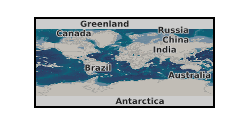University of the West of England
Type of resources
Topics
Keywords
Contact for the resource
Provided by
Years
Formats
Representation types
Update frequencies
Resolution
-
This dataset comprises operational data for a novel decentralised drinking water treatment platform (DWTP) and water quality data for three sampling points within the treatment system. The dataset captures a period of 12 weeks between November 2019 and February 2020. The DWTP was continuously operational throughout this time period with samples from across the system being collected at nine timepoints throughout this three-month period. Operational data from the remote telemetry unit on the DWTP reports flow rate through the system, transmembrane pressure for the ultrafiltration and both the oxidation-reduction potential (ORP) and the free chlorine of the treated water. Data is also provided for a suite of biological, physicochemical, chemical, metals, hydrocarbons and disinfection byproducts. This data was produced from water samples which were sent to an accredited UK laboratory. The data reports for all samples for each of the 3 sampling locations within the treatment system are summarised into .csv files. Information about the location of each sampling point and the level of treatment received at each point can be found in the supporting documentation. Full details about this dataset can be found at https://doi.org/10.5285/98148025-e8ef-40f9-907e-dae8b28106d2
-
This dataset comprises field sensor physicochemical and optical/fluorescence measurements, as well as laboratory microbiological and chemical analysis, for urban surface water samples. Samples were collected at different locations throughout the urban area of Kolkata, with the latitude and longitude of all sample location provided within the spreadsheets. Samples/data were collected across three separate field surveys undertaken in June 2018 (file 1), March 2019 (file 2) and December 2019 (file 3). This dataset forms a case study of the water quality of three different types of urban surface freshwaters within the city of Kolkata, India. This case study was created to deploy a prototype multichannel fluorimeter and assess its ability to identify waters with a high bacterial load and biological contamination events through the use of Peak T fluorescence. Full details about this dataset can be found at https://doi.org/10.5285/9bc3dce7-7c2b-49dd-9b76-819267d7a352
-

These data represent a series of analyses exploring the seismic behaviours of low-cohesion volcanic sediments – in this case the Neapolitan Yellow Tuff - under varying strain rates. The data include deformation logs from triaxial compression experiments, and the accompanying 12-channel acoustic emission recordings at 10 MHz. These are paired with X-Ray Computed Tomography images of one of the cores from both before and after deformation, to examine damage behaviour. These data include: Deformation logs captured from the triaxial press Acoustic emission event data Processed acoustic emission sonograms for selected events Matlab code for processing of sonograms Matlab code for statistical analysis of the acoustic emission data Before and after X-Ray Computed tomography data for a core which underwent 2% strain at a rate of 4x10-6 s-1. These data relate to Rowley et al - Deformation controlled Long-Period seismicity in low cohesion volcanic sediments https://doi.org/10.31223/osf.io/7rkzv
-
These files represent the model build used to generate postcode level concentrations to estimate Aspergillus fumigatus exposure from outdoor composting activities in England between 2005 and 2014. Each file, named after the nearest SCAIL-Agriculture validated meteorological station used to model the outputs, contains modelled concentrations at composting sites within 4km of each composting site. These files, presented as.txt, are the .APL files used to model bioaerosol dispersion from every composting site in England, using ADMS 5. To use this file, please convert the .txt file extension to .APL and upload into ADMS. From there, press run. Model runs are likely to generate over 40GB of data per model run. The work was supported by the Natural Environment Research Council grants ((NE/P010806/1 and NE/M011631/1). Full details about this dataset can be found at https://doi.org/10.5285/9f1b307b-9b47-4a11-8e5b-e14008ad0032
 NERC Data Catalogue Service
NERC Data Catalogue Service